Why Are Canada's Manufacturers Replacing Manual Handling with Pallet Inverters?
Running a manufacturing plant in Canada is tougher than ever. You're constantly juggling rising labor costs, strict safety rules, and the relentless pressure to be more efficient. A big part of this struggle happens in the warehouse, specifically with handling pallets. Manually moving, restacking, or swapping goods from a broken pallet is slow, physically demanding, and a major source of workplace injuries. This old way of doing things creates bottlenecks, damages products, and ultimately eats into your profits, making it hard to compete. But what if you could solve these problems with one strategic piece of equipment? Many Canadian facility managers are discovering they can, by turning to pallet inverters.
Canadian manufacturers are replacing manual handling with pallet inverters to solve three core problems: high labor costs, workplace safety risks, and operational inefficiency. Pallet inverters automate the strenuous task of lifting and turning loads, which cuts the need for manual labor, drastically reduces costly back injuries, and speeds up the entire process of swapping pallets or recovering damaged goods. This allows Canadian companies to improve their bottom line while becoming safer and more competitive.
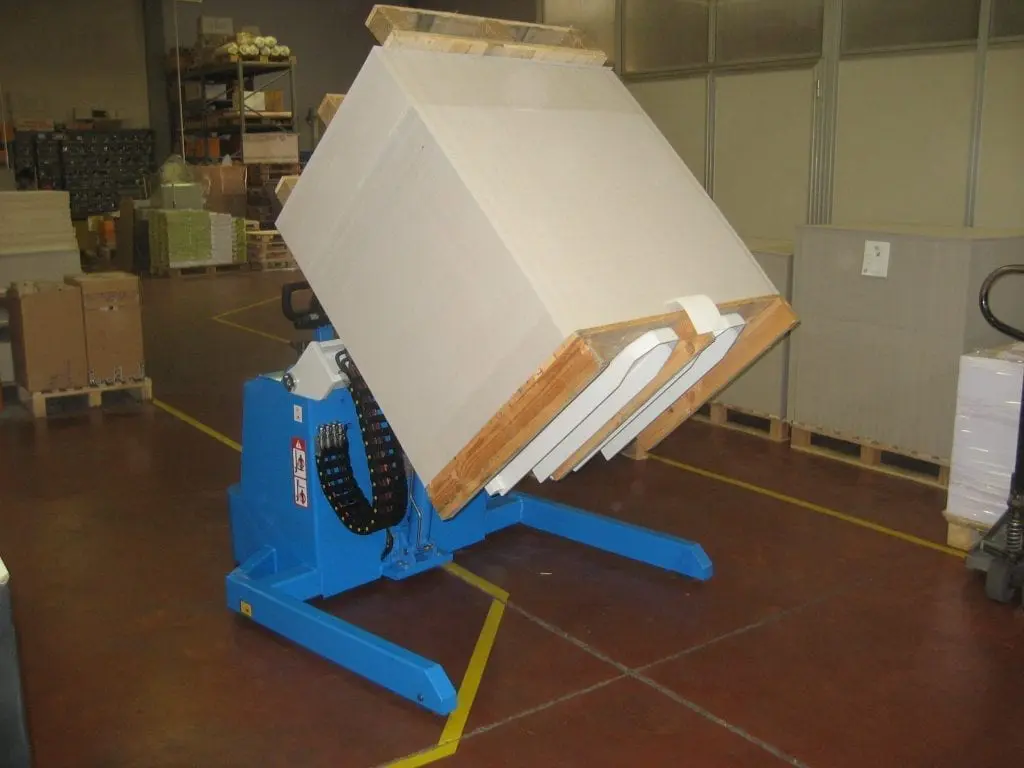
This isn't just about buying a new machine. It's a fundamental shift in how work gets done. It's about recognizing that your employees' health and your operational speed are valuable assets. When I started my journey in this industry, first as an engineer and later as a factory owner, I saw firsthand how a single inefficiency could ripple through the entire production line. Today, I see Canadian manufacturers making smart, strategic investments to eliminate those weak points. Let’s dive deeper into the specific reasons why the pallet inverter is becoming an indispensable tool in their operations.
How Do Pallet Inverters Directly Address Rising Labor Costs and Shortages in Canada?
In every conversation I have with plant managers across Canada, from Ontario to British Columbia, the same issue comes up: labor. Finding people for tough, physical jobs is difficult, and keeping them is even harder. The costs aren't just in the hourly wage; they're in the constant cycle of recruiting, hiring, and training new staff, only to see them leave for less demanding work. When a key person on your shipping team calls in sick, the whole line can back up, creating delays that your customers won't tolerate. This reliance on manual labor for tasks like restacking pallets is a huge operational risk. That's why smart businesses are looking for a more stable solution, one that doesn't depend on the day-to-day availability of manpower. They are finding it in automation.
Pallet inverters directly address labor challenges by transforming a multi-person, physically intensive job into a safe, one-person task. Instead of needing two or three workers to manually unstack and restack a 2,000 kg load, a single operator can use a pallet inverter to do the same job in under a minute. This drastically reduces your reliance on manual labor for this specific task, mitigating the impact of Canada's tight labor market and freeing up your valuable team members for more complex, higher-value work.
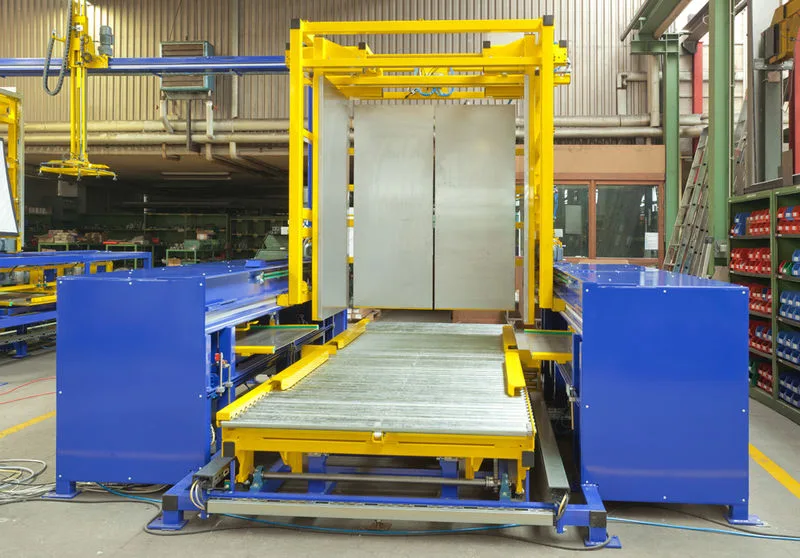
The Real Economics of Manual Pallet Handling
When we look at the cost of labor, the hourly wage is only the tip of the iceberg. The true cost includes benefits, insurance, overtime, and the high price of employee turnover. Every time you have to replace an employee, you incur costs for job postings, interviews, background checks, and training. All this time and money is spent just to get back to your baseline. An automated solution like a pallet inverter changes this equation. It's a one-time capital expense that delivers predictable performance day in and day out.
Let's break down a simple comparison. I've worked with clients who have done this exact analysis, and the results are always compelling.
| Cost Factor | Manual Handling (2 Employees) | Pallet Inverter (1 Operator, Part-Time) |
|---|---|---|
| Annual Wages | $104,000 (based on $25/hr/employee) | $26,000 (operator spends 25% of time on this task) |
| Recruitment/Training | $5,000 - $10,000 (assumes turnover) | $0 (after initial training) |
| Overtime Risk | High (to catch up on backlogs) | Low (consistent, fast cycle time) |
| Productivity | 15-20 minutes per pallet | < 1 minute per pallet |
| Total Estimated Annual Cost | >$110,000 | $26,000 + Machine Depreciation |
Turning Laborers into Technicians
I remember visiting a wire and cable manufacturer in Alberta. Their biggest bottleneck was in the shipping department. They had three of their strongest employees dedicated to manually fixing broken pallets. It was slow, hard work. After we helped them install a pallet inverter, they reassigned two of those employees. One was trained to operate a new, high-value CNC machine, and the other moved into a quality control role. The company didn't just cut labor costs; they transformed that expense into a value-adding asset. Their output increased, and the employees were happier in more skilled, less physically taxing roles. This is the real power of automation: it elevates your workforce.
What Are the Hidden Safety and Compliance Benefits of Automating Pallet Handling?
As a factory owner, one of your biggest fears is the phone call telling you an employee has been seriously injured. In manual handling, the risk of back injuries, sprains, and strains is incredibly high. These aren't minor incidents; a single musculoskeletal injury (MSI) can lead to months of lost work, significant workers' compensation claims, and government audits. Canadian provincial safety regulations, like those from WorkSafeBC or Ontario's Ministry of Labour, are becoming increasingly strict about ergonomics. Simply telling your employees to "lift with their legs" is no longer enough. You are expected to have engineering controls in place to remove the hazard. Ignoring this reality is not just a risk; it's a direct threat to your business's financial health and reputation.
The primary hidden benefit of a pallet inverter is that it acts as a powerful engineering control, virtually eliminating the manual lifting hazard at its source. By automating the lift-and-turn process, you are not just making the job easier; you are designing safety directly into your workflow. This makes it far simpler to comply with Canada's stringent Occupational Health and Safety (OHS) regulations, which can lead to lower insurance premiums, avoidance of heavy fines, and a workplace culture where employees feel safe and valued.
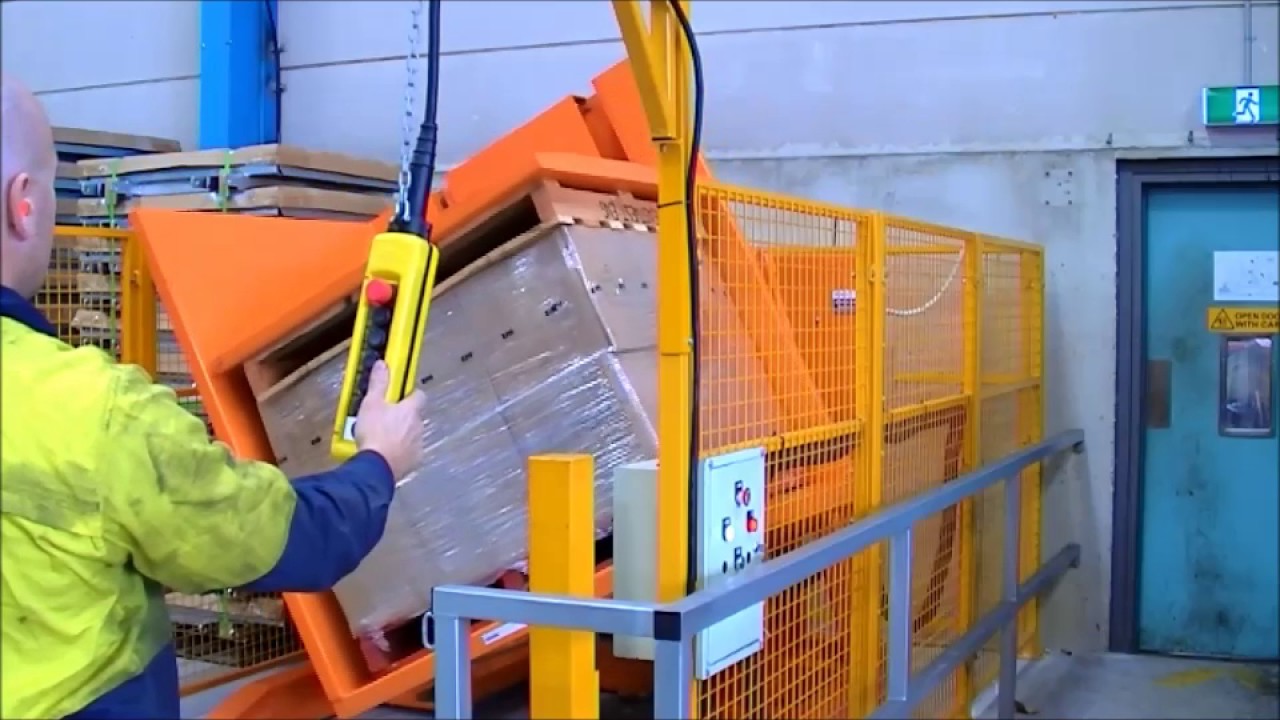
Moving Beyond PPE and Admin Controls
Safety professionals talk about the "hierarchy of controls" to manage workplace hazards. At the bottom are Personal Protective Equipment (PPE) like back braces and administrative controls like job rotation. These are the least effective because they rely on perfect human behavior. A pallet inverter sits near the top of this hierarchy as an Engineering Control. It physically removes the dangerous task from the employee.
| Control Level | Manual Handling Example | Pallet Inverter Solution | Effectiveness |
|---|---|---|---|
| Elimination/Substitution | N/A (task must be done) | N/A | Highest |
| Engineering Control | None | The pallet inverter itself | High |
| Administrative Control | "Two-person lift" rule, job rotation | Safe operating procedures for the machine | Low-Medium |
| PPE | Back brace, gloves | Minimal PPE needed for operator | Lowest |
By investing in an engineering control, you are solving the problem permanently, not just putting a temporary patch on it.
The True Cost of a Workplace Injury
Early in my career as an engineer, I witnessed a colleague suffer a serious back injury while trying to restack heavy steel components from a collapsing pallet. The direct costs to the company were substantial—medical bills, compensation, and a fine from the safety authority. But the indirect costs were even greater. We lost production for half a day. Team morale plummeted. Management spent weeks on incident reports and corrective action plans. That single event probably cost the company more than a pallet inverter would have. It taught me a lesson I never forgot: proactive investment in safety is always cheaper than reacting to an accident. For Canadian manufacturers, where WCB premiums are directly tied to safety records, a pallet inverter is not just a piece of equipment; it's an investment in financial stability.
Can a Pallet Inverter Really Improve Supply Chain Efficiency and Reduce Product Damage?
Imagine a truck arrives at your customer's distribution center, and the driver is told the shipment is rejected because of a single broken pallet. The entire load is now in limbo. Your team has to arrange for it to be returned, manually unload it, inspect for damaged goods, restack it on a new pallet, and then re-ship it. This single failure causes a cascade of problems: wasted time, extra freight charges, frustrated customers, and potential damage to your products during all this extra handling. This scenario is a common and expensive headache. It's a pure loss of efficiency that directly impacts your bottom line and your reputation as a reliable supplier.
Yes, a pallet inverter can dramatically improve your supply chain efficiency and cut product damage. It transforms the chaotic, time-consuming process of fixing a bad pallet into a controlled, predictable, 60-second task. The machine securely clamps the entire load, rotates it, and allows for the swift replacement of the faulty pallet. This speed minimizes disruptions and keeps your products moving. Furthermore, the gentle but firm clamping action protects your goods from the drops, impacts, and shifting that are common during manual restacking, preserving the integrity of your products and ensuring they arrive at your customer in perfect condition.
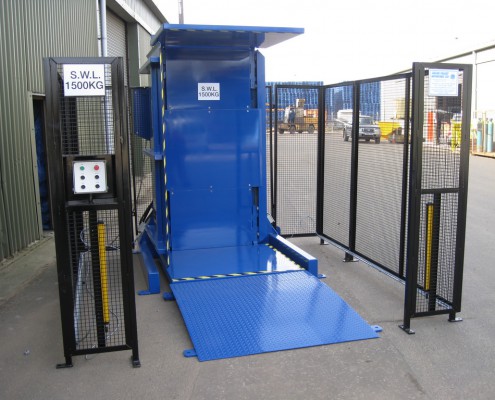
From Hours to Minutes: A Process Comparison
The difference in efficiency is not small; it's a complete game-changer. Let's map out the typical manual process versus using a pallet inverter. When I show this to clients, the value becomes instantly clear.
| Step | Manual Transfer Process | Pallet Inverter Process |
|---|---|---|
| 1. Preparation | Find clear floor space. Bring a new pallet. | Forklift driver brings load to inverter. |
| 2. Unloading | Two workers manually unstack boxes/bags one by one. | Operator loads pallet into the machine and closes the clamps. |
| 3. Risk Point | High risk of dropping items or personal injury. | Load is fully secured by the machine. |
| 4. Reloading | Workers restack items onto the new pallet. | Operator inverts the load 180 degrees. |
| 5. Securing | Manually apply new stretch wrap. | Operator removes the old pallet, replaces it with the new one. |
| 6. Completion | Clean up the area. | Operator inverts the load back. The new pallet is ready. |
| Total Time | 20-30 minutes (or more) | Under 60 seconds |
This speed means a truck with a broken pallet doesn't have to wait for hours in your yard. The problem is fixed, and it's on its way. This is critical for meeting the tight delivery windows required by major retailers and distributors in Canada.
Protecting Your Product, Protecting Your Profit
I once worked with a food ingredient producer in Quebec. They were dealing with significant losses from torn 25kg bags of sugar and flour whenever a pallet had to be restacked. The manual handling was just too rough. After they installed a pallet inverter with adjustable clamping pressure, their product damage from this issue dropped to nearly zero. The machine paid for itself in less than 18 months from the value of saved product alone. Whether you're handling bags of cement, boxes of sensitive electronics, or pails of paint, the controlled, gentle rotation of an inverter is far superior to manual handling. It protects your product, which in turn protects your profit margin.
What Is the True ROI of a Pallet Inverter for a Canadian Manufacturing Plant?
As a business owner, you scrutinize every major purchase. When you look at the price tag of a pallet inverter, it's natural to see it as a significant capital expense. It's easy to get fixated on that initial number and compare it to the "free" option of using your existing workforce. But this is a mistake. Manual handling isn't free. You are already paying for it every single day in hidden, recurring costs: wages for inefficient labor, high insurance premiums from injuries, the cost of products damaged during handling, and the productivity lost to operational bottlenecks. The real question isn't "What does a pallet inverter cost?" but "How much is not having one costing me?"
The true Return on Investment (ROI) of a pallet inverter comes from adding up all the money you stop spending once it's installed. When you calculate the combined annual savings from reduced labor, lower WCB premiums, eliminated product damage, and increased throughput, the numbers are often powerful. For many Canadian manufacturing plants I've worked with, the payback period for a pallet inverter is typically between 12 and 24 months. After that, the savings go directly to your bottom line, year after year.
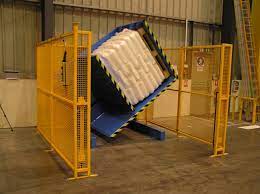
A Simple Framework for Your ROI Calculation
You don't need a complex financial model to see the potential. You can build a solid business case with a few key data points from your own operation. This is the kind of practical analysis I insisted on when I was running my own factory, and it's how we help our partners at SHJLPACK make confident decisions.
Here's how to structure it:
| Savings Category | Your Annual Calculation | Example Figures |
|---|---|---|
| A. Labor Savings | (Hourly Wage + Benefits) x (Hours Saved Per Day) x (Work Days Per Year) | $35/hr x 3 hours/day x 250 days = $26,250 |
| B. Safety Savings | (Annual WCB Premium Reduction) + (Avg. Cost of One Injury Avoided) | $2,000 + $10,000 (conservatively) = $12,000 |
| C. Product Damage Savings | (Value of Goods Damaged Per Year) x (% Reduction) | $30,000 x 80% reduction = $24,000 |
| D. Efficiency Gains | (Value of Increased Throughput/Reduced Downtime) | Highly variable, but let's say $5,000 |
| Total Annual Savings (A+B+C+D) | $67,250 |
If the pallet inverter costs $50,000, your simple payback is: $50,000 / $67,250 = 0.74 years, or about 9 months. Your numbers will be different, but this framework shows how quickly the investment can pay for itself.
A Partner for the Long Term
Achieving an ROI like this depends on choosing the right machine and, more importantly, the right partner. When I founded SHJLPACK, I did it based on my own journey from engineer to factory owner. I know the pressures you face. I know that every investment has to be justified. That's why we don't just sell equipment. We work with you to understand your specific challenges and goals. We help you run the numbers and build the business case. Our goal is to provide a total solution that delivers real, measurable value, because we believe that our success is tied directly to yours.
Conclusion
For Canadian manufacturers, pallet inverters are a strategic investment in resilience. They directly address key challenges, boosting safety, efficiency, and profitability in a demanding and competitive global market.




